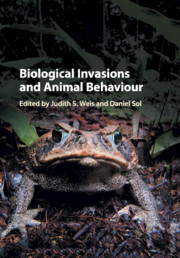Book contents
Part III - Case Studies
Published online by Cambridge University Press: 27 October 2016
Summary

- Type
- Chapter
- Information
- Biological Invasions and Animal Behaviour , pp. 219 - 344Publisher: Cambridge University PressPrint publication year: 2016

